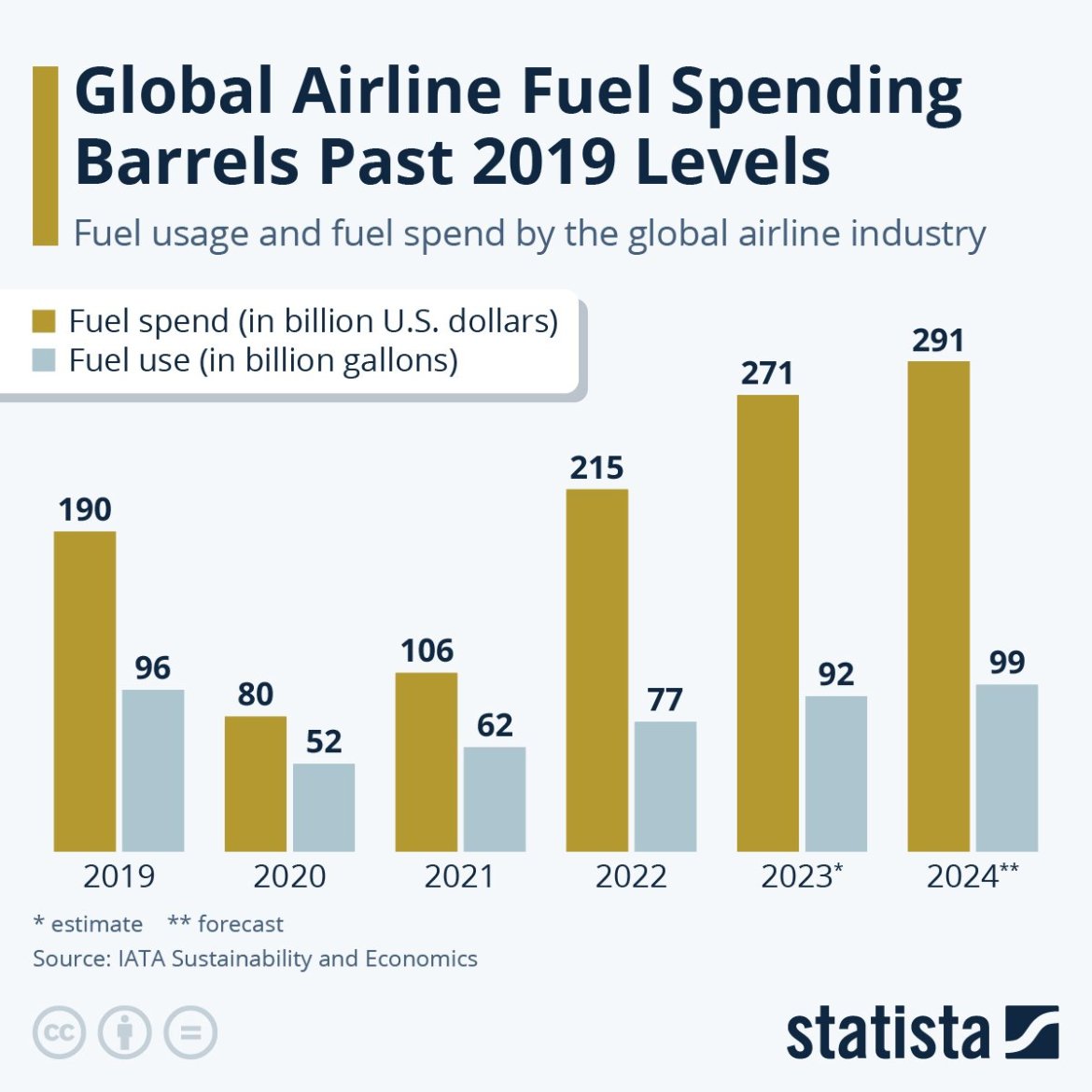Aviation
The Impact of Increasing Jet Fuel Costs

Jet fuel is a refined kerosene-type petroleum product used commonly to power commercial and military aircraft engines, accounting for 10% of the United States’s total use of liquid fuel as detailed in the U.S. Energy Information Administration (EIA) handbook. As airlines spend a large portion of their budget on jet fuel, it leads to an increasing disparity between liquid fuel expenses and use as showcased by Statista’s interpretation of the International Air Transport Association (IATA) data, with factors like geopolitical tensions contributing to it.

Increasing Ticket Prices
Jet fuel prices have stabilised in comparison to their sudden post-pandemic increase in 2022, but still remain costly for airlines and customers. It’s direct correlation to airline budgets provides it a scope to creep into air-fare prices, leading to costlier travel. With the Bureau of Transportation Statistics recording use of 1.3 Billion gallons of fuel at a rate of $2.83 per gallon by airlines in the United States, as of February 2024.

Fuel Hedging As a Solution
The U.S. Energy Information Administration (EIA) describes fuel hedging as a strategic financial tool employed by airlines to mitigate the risks associated with fluctuating oil prices. By leveraging financial instruments such as futures or options contracts, airlines can lock in a stable price for their fuel needs over a specific timeframe. This provides predictability in operating expenses and shields against potential price spikes caused by market volatility, supply-demand imbalances, or geopolitical uncertainties.

Case Study: Singapore Airlines
Singapore Airlines (SIA) mitigated fuel cost volatility through a hedging strategy prioritising a stability in price over speculative profits. SIA secured higher hedge coverage for near-term fuel requirements using a declining wedge approach, ensuring predictable costs even during fluctuating oil prices. This guaranteed operational stability, particularly in unpredictable market conditions. Between FY2022/23 and FY2023/24, SIA recorded profits of $970.3 million through hedging, effectively offsetting rising fuel expenses.
Do you believe a carefully structured hedging framework can enable airlines to manage financial risks while maintaining operational stability? Share your thoughts in the comments section below.






























